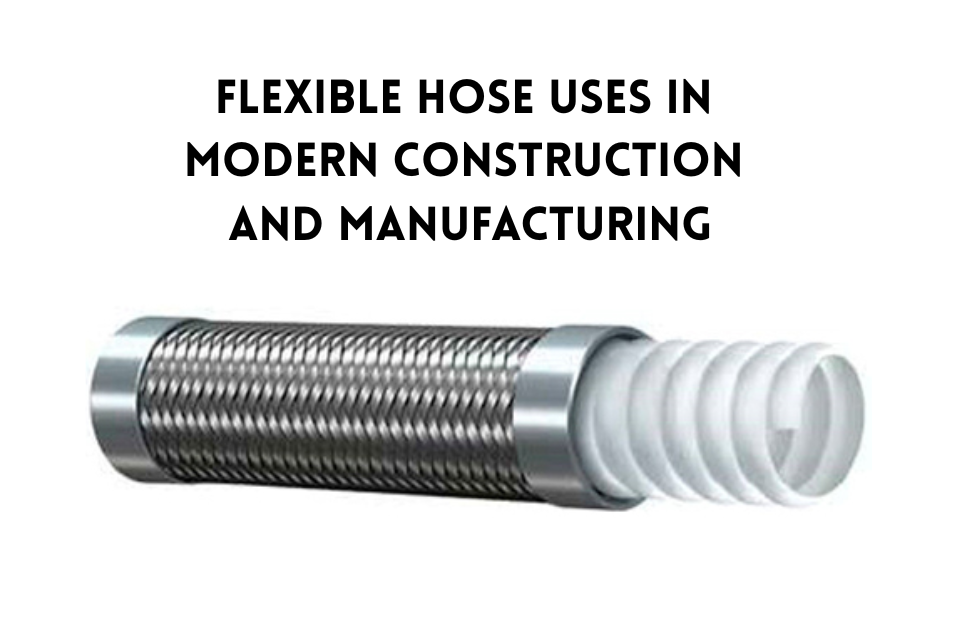Gone are the days when rigid piping was the only solution for fluid transfer across industrial settings. The evolution of industrial technology has brought with it innovative solutions that address complex challenges faced in construction and manufacturing environments. Among these solutions, flexible hoses stand out as versatile components that have revolutionised how materials are transported across facilities.
Flexible hose uses span across numerous applications where traditional rigid piping simply falls short. From transferring abrasive materials to handling extreme temperatures and pressures, these adaptable conduits have become indispensable in modern industrial operations. Their ability to bend, twist, and conform to various spatial constraints makes them particularly valuable in complex system designs where space optimisation is crucial.
The Engineering Advantages of Flexible Hoses
The structural design of flexible hoses offers significant advantages over conventional rigid piping systems. Their inherent ability to absorb vibration helps reduce mechanical stress on connected equipment, potentially extending the lifespan of entire systems. This vibration-dampening quality proves particularly valuable in environments with heavy machinery generating continuous movement and oscillation.
Temperature fluctuations pose serious challenges in many industrial settings. Flexible hoses equipped with proper insulation and material composition can withstand extreme temperature ranges without compromising their structural integrity. Whether handling molten materials in foundries or cryogenic substances in specialised manufacturing, the right flexible hose solution ensures reliable performance under demanding thermal conditions.
Pressure management represents another critical area where flexible hoses demonstrate their engineering merit. Modern manufacturing often requires systems capable of handling varying pressure levels, sometimes shifting rapidly between high and low pressure states. Quality flexible hoses maintain their structural integrity despite these fluctuations, preventing leaks and system failures that could lead to costly downtime.
Applications in Modern Construction
Construction sites present unique challenges for fluid and material transfer. Equipment often needs to move between locations, requiring connection systems that can accommodate changing positions while maintaining operational integrity. Flexible hoses serve this purpose exceptionally well, allowing machinery to remain connected to supply lines regardless of position shifts.
Concrete delivery systems particularly benefit from high-quality flexible hoses. The abrasive nature of concrete mixtures demands transfer systems that can withstand internal wear while maintaining the flexibility needed to reach various pouring locations. Specialised hoses designed for this purpose incorporate reinforced linings that resist abrasion while maintaining the necessary flexibility for practical deployment.
Demolition work generates significant amounts of dust and debris, necessitating robust extraction systems. Flexible hoses designed for dust extraction must combine durability with flexibility, allowing systems to reach confined spaces while handling the abrasive nature of construction debris. These specialised hoses often incorporate crush-resistant designs that maintain functionality even in high-traffic construction environments.
Manufacturing Applications and Solutions
The manufacturing sector relies heavily on pneumatic systems for various operations, from powering tools to controlling automated machinery. Flexible air hoses form the backbone of these systems, delivering compressed air where needed while accommodating the dynamic nature of manufacturing floors. These hoses must maintain consistent air pressure while withstanding frequent movement and potential contact with oils and chemicals.
Chemical processing presents perhaps the most demanding environment for flexible hoses. The transfer of caustic or corrosive substances requires hoses manufactured from materials specifically resistant to the chemicals being handled. Safety becomes paramount in these applications, with proper hose selection directly impacting both operational efficiency and workplace safety standards.
Food and beverage manufacturing necessitates specialised hose solutions that meet strict hygiene standards. These hoses must not only transfer materials effectively but also resist bacterial growth and contamination. Materials used in food-grade flexible hoses undergo rigorous testing to ensure they don’t leach unwanted substances into food products while maintaining the flexibility needed for efficient processing operations.
Maintenance Considerations for Extended Service Life
Even the highest quality flexible hoses require proper maintenance to achieve their maximum service life. Regular inspection protocols should examine hoses for signs of wear, including cracks, bulges, or unusual stiffness. These indicators often signal impending failure, allowing for preventative replacement before catastrophic failure occurs during critical operations.
Storage practices significantly impact hose longevity when not in use. Proper coiling techniques prevent kinking and structural damage, while appropriate storage environments protect against temperature extremes and UV exposure that can degrade hose materials. Taking these seemingly minor precautions can dramatically extend the functional lifespan of industrial hoses.
Cleaning procedures vary depending on the substances transported through flexible hoses. Flushing protocols should match the specific materials handled, ensuring complete removal of residues that might damage hose interiors or contaminate future batches of transferred materials. Proper documentation of cleaning procedures ensures consistency in maintenance practices across operating teams.
Selecting the Right Flexible Hose for Specific Applications
Material compatibility represents the foremost consideration when selecting flexible hoses for specific applications. The substances being transferred must not react with or degrade the hose material, whether dealing with aggressive chemicals, food products, or abrasive slurries. Consulting compatibility charts and industry standards helps ensure appropriate material selection for each unique application.
Environmental factors play a crucial role in hose selection and deployment. Outdoor applications must consider UV exposure, temperature fluctuations, and potential weather effects on hose materials. Similarly, indoor environments with extreme heat, cold, or humidity require hoses specifically designed to withstand these conditions without premature degradation.
Pressure and flow requirements determine the structural specifications needed for effective operation. Engineers must calculate maximum pressure loads, including potential pressure spikes, when selecting appropriate hose ratings. Undersized hoses may fail under pressure, while oversized options waste resources and space—finding the optimal balance requires careful analysis of operational requirements.
Future Trends in Flexible Hose Technology
Smart monitoring systems represent an emerging trend in industrial hose applications. Embedded sensors capable of detecting pressure changes, temperature fluctuations, or early signs of wear allow for predictive maintenance rather than reactive replacement. This technology promises to reduce downtime and prevent catastrophic failures before they occur.
Material science advances continue to expand the capabilities of flexible hoses in extreme environments. New polymer blends and composite materials offer improved resistance to chemicals, temperature extremes, and mechanical stress. These innovations extend the operational parameters of flexible hoses into applications previously deemed too demanding for non-rigid transfer systems.
Sustainability concerns are driving development of eco-friendly hose options that maintain performance while reducing environmental impact. Biodegradable materials, reduced chemical leaching, and improved recyclability represent key focus areas for manufacturers committed to developing more sustainable industrial components without compromising on operational reliability.
Conclusion
The versatility and reliability of flexible hose have secured their position as essential components in modern construction and manufacturing operations. Their ability to adapt to diverse requirements while maintaining performance under challenging conditions makes them invaluable across countless industrial applications. For operations managers and engineers facing complex fluid transfer challenges, consulting with specialists in industrial hose solutions can help identify the optimal configurations for specific needs. Taking this step ensures not just operational efficiency, but also enhanced safety and reduced maintenance costs across industrial systems.












